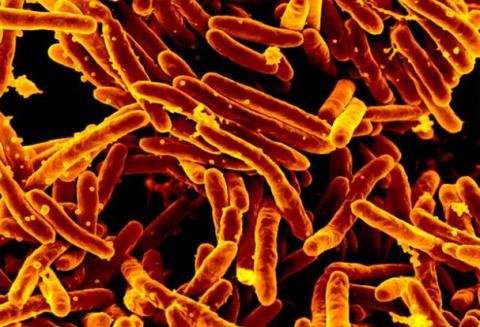Wily tuberculosis bacteria can vary its diet to infect you longer

Worldwide, approximately one in four people is infected by Mycobacterium tuberculosis and while overall New Zealand has relatively low rates of TB, Māori and Pacific people are eight times more likely to be affected than Pākehā.
One of the most puzzling characteristics of the TB bacterium is how it manages to survive so long in the body before becoming active. It can live but remain dormant in its host for more than ten years before symptoms occur. In humans, this usually happens when the immune system is compromised or weakened in some way.
In a host, the TB bacterium needs food to survive, mostly in the form of different types of carbon. Scientists have long known that an enzyme within the bacterium allows it to utilize different sources of carbon, depending on what is available.
A team of researchers from the University of Auckland and Victoria University of Wellington focused their work on the structure and function of this enzyme which, although discovered more than 20 years ago, has not been well understood until now.
Using experimental and computational approaches, the team managed to isolate the enzyme and discovered it plays a key role in food utilization. While normally the TB bacterium takes both glucose and fatty acids as food, this enzyme allows it to "switch" so it can use other forms of carbon, such as cholesterol, and turn those into glucose.
"This work potentially opens up a new way to design new drugs to tackle TB," says Dr. Ivanhoe Leung from the University of Auckland's School of Chemical Sciences.
"The World Health Organisation wants TB eradicated by 2030 but multi-drug resistant strains are on the rise so new targets for drugs and new ways of tackling the disease are needed if we are to achieve that goal."
Dr. Ram Bhusal, now at Australia's Monash University, led the research. His home of Nepal has some of the highest rates of TB in the world with up to 45 percent of the population affected.
The research is published in Nature Communications.
More information: Ram Prasad Bhusal et al. Acetyl-CoA-mediated activation of Mycobacterium tuberculosis isocitrate lyase 2, Nature Communications (2019). DOI: 10.1038/s41467-019-12614-7
Journal information: Nature Communications
Provided by University of Auckland




















